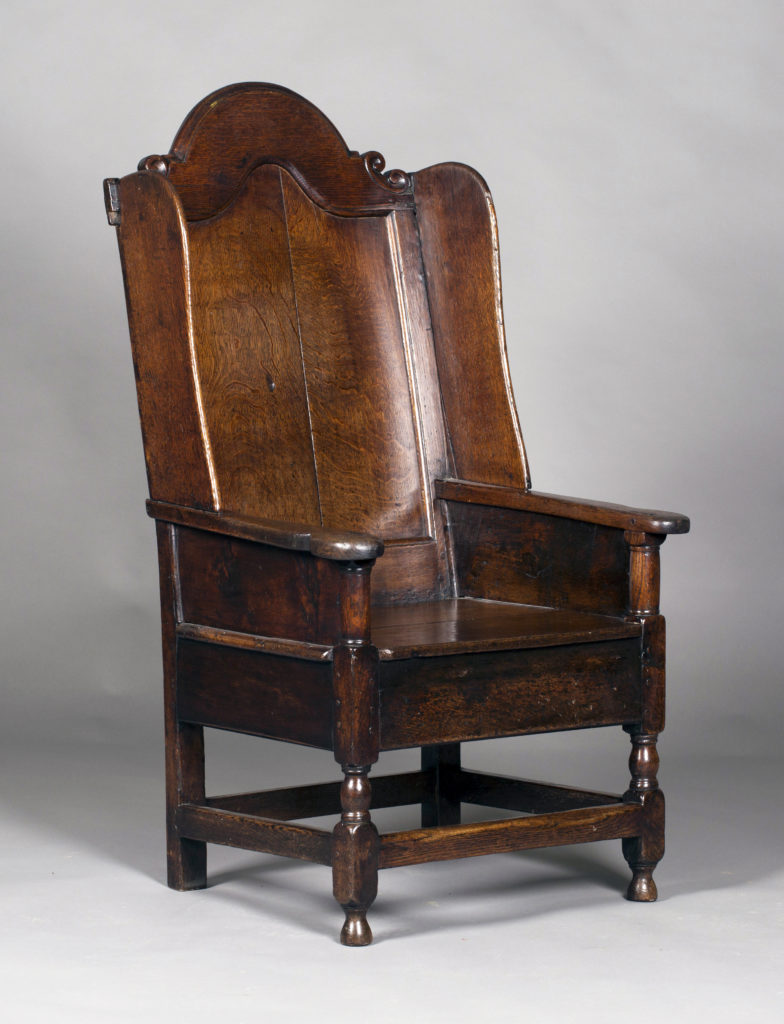
Above is a photo of a late 17th chair. The issue of to what extent flooding was considered a disaster in the past is an interesting one. For those living on flood plains flooding must have been relatively common, clay bank or no clay bank, river levee or no. Modern houses can very easily be wrecked by flooding – electricity points, central heating systems, porous furniture and soft furnishings, stoothing (?) walls, composite doors, carpets etc.
17th century furnishings, like the chair above, being solid wood could be cleaned, aired-out and suffer no short-term ill effects. Similarly fireplaces could be dried and rushes on the floor replaced. Mud walls could be undermined but their thickness would stand them in good stead. Soft furnishings would have been few. A problem might well come if linens or papers were kept in floor-standing chests of drawers where each drawer had no good seal against the frame.
So was it the case that for some people the advantages of the site outweighed the disadvantages of flooding?